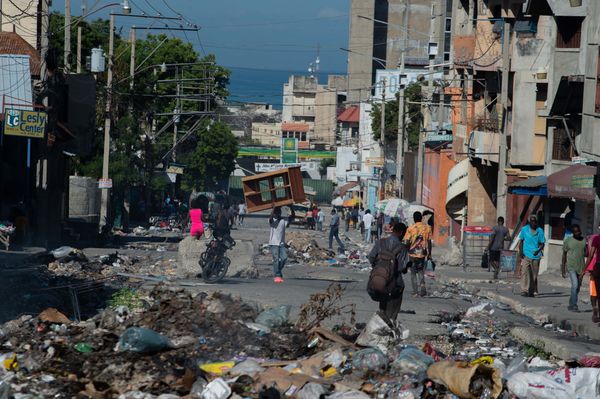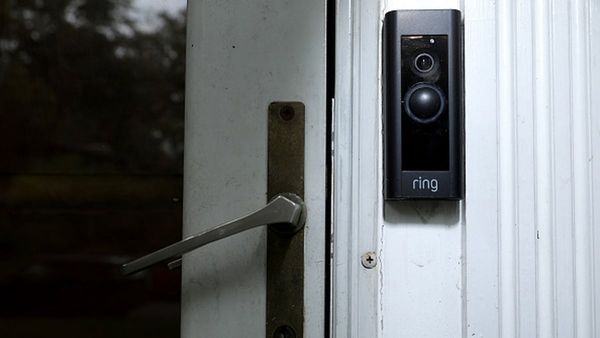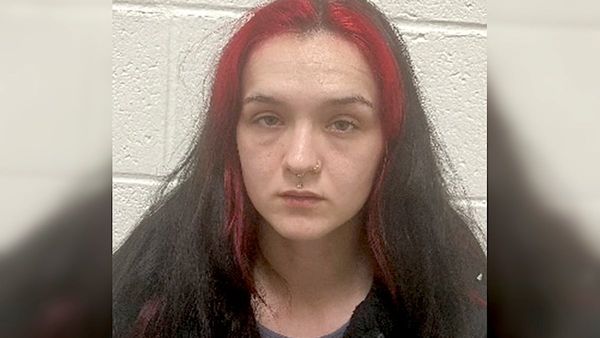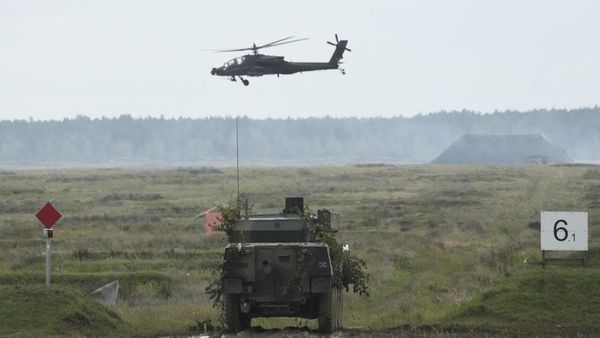
He was a man who danced between two worlds, carried stories across continents and, on his final journey, returned to the land that made him.
Before his death in November 2021, actor David Gulpilil made one final request: to be laid to rest in his ancestral home, deep in remote East Arnhem Land. Honouring that wish became a monumental undertaking and the subject of a documentary releasing across Australia next week called Journey Home, David Gulpilil.
It was a profound repatriation spanning more than 4,000 kilometres, unfolding over almost a year and beginning in Murray Bridge, South Australia, where Gulpilil was receiving treatment for terminal lung cancer. Planes, boats, vans and helicopters were variously commandeered to transport Gulpilil’s casket along the way; there were also long stretches on foot. It traced a path through landscapes that had shaped the actor’s life and legacy, and culminated in the place of his birth: Gupulul, on Yolŋu country, on 20 September 2022, almost 10 months after his death.
Capturing this epic journey were film-makers Trisha Morton-Thomas and Maggie Miles, who have interwoven archival footage into the documentation of Gulpilil’s “one-way ticket home”, as he called it, and the 10-day funeral rituals, called Bäpurru, held in Ramingining and Gupulul, that lay him to rest.
Filming was both emotionally and logistically demanding, the directing duo say.
“We’re all thinking on our feet the whole time,” Miles says. “You’ve got this balance of filming extraordinary culture and emotion … and really challenging logistics to think about. How we’re going to get from A to B? Have we got enough water? Is everyone coping well in the heat? There’s so many people and so much activity going on the whole time, you don’t have time to stop and reflect – you’ve just got to keep shooting.”
After three days on the road to Darwin, David’s body was flown to Nhulunbuy on the Gove Peninsula, with the plane flying low over communities so people could say goodbye. He then remained in Nhulunbuy’s mortuary for eight months as his grieving family waited out the wet season. Hopes that the land would dry up enough to drive Gulpilil to Gulpulul dwindled; a ranger’s barge, a helicopter and, at one point, what Gulpilil’s son Jamie calls a “zombie tinny” – no oars, no engine – was employed to navigate crocodile-infested tidal rivers.
“We were thigh-deep in mangrove mud,” Morton-Thomas recalls. “And you knew you’d have a snowball’s chance in hell of getting out if a crocodile decides you’re dinner.”
The 90-minute film, narrated by Hugh Jackman, features storytelling by Baker Boy, and is produced by Gulpilil’s eldest son, Jida Gulpilil.
“There could have been an easier way – some people said, ‘Let’s lay him to rest [in Ramingining] where his brother is so that everyone can come,’” Jida says. “But after his passing, that’s when we really realised, we have to fulfil his wishes – by any means.”
A two-week journey of ceremony, singing, dancing and cultural process through a system of tribes, clans and families culminated in Gulpilil’s burial, in a sacred place the actor had long protected – “Like he protected me,” Jida says.
Sensitivity, experience in protocol and the implicit trust of the Yolŋu families involved were crucial when capturing two sacred ceremonies shown in the film: the Bäpurru, which took 10 days; and the initiation of Gulpilil’s grandson, which had been delayed to coincide with the funeral – a farewell to one man, the creation of another.
There were moments when the camera needed to step back. “The family was so incredibly open with the access to the ceremonies,” says Morton-Thomas. “We had to hold up a moral bar to ourselves and say, no, we are not going to overstep this line. We’re going to allow the family to have their grief in these moments.”
The archival footage used tracks Gulpilil’s career from the early 1970s. At age 16, his skill as a dancer caught the eye of British director Nicolas Roeg, and his 1971 film Walkabout launched a career that would span five decades (although his name was miscredited in the final cut and on the poster as “David Gumpilil”).
There’s footage of 17-year-old Gulpilil en route to the Cannes film festival, then speaking only a little English, and passing through London to meet the Queen. “I win awards, I travel the world,” he says in the footage, reflecting on his whirlwind rise. “I walked on the red carpet and I went to a John Lennon party … I hung out with Jimi Hendrix and Bob Marley.”
Starring roles followed in films including Storm Boy, The Last Wave, Crocodile Dundee, Rabbit-Proof Fence and The Tracker, for which he won an AFI award. He narrated Ten Canoes in Yolŋu Matha, and delivered a haunting performance in Charlie’s Country, which won him best actor at Cannes in 2014.
Gulpilil used to say he moved between the worlds of black and white Australia with ease; it was “easy, like drinking coffee – milk and two sugar”, he once told a journalist. But those close to him dispute this; his childhood friend Yingiya Mark Guyula, a Yolŋu man of the Djambarrpuyŋu clan and the Liya-Dhälinymirr people and now an independent member of the Northern Territory Legislative Assembly, told the NT parliament after his death: “He walked in two worlds and sometimes it tore him apart.”
Not included in Journey Home are Gulpilil’s later admissions, made in the 2021 documentary My Name is Gulpilil, that he became drug and alcohol dependent early in his career, culminating in two suspended sentences for domestic violence in 2011 and 2012.
“Yes, he did struggle,” Jida says now, “but he did it with grace. I watched him in those two worlds, but he taught me, I think, to survive it better with the education that he never was able to get.”
Gulpilil’s distinction as an Indigenous actor who achieved international acclaim while staying deeply rooted in traditional life, remains. Despite his father’s long absences during his film career, Jida remembers his regular returns to country with warmth.
“He did go away a lot, but we were happy to stay home and wait for him to finish his work and come and share his work with us and watch his films over and over,” he says. “We loved it when he would go out there and share his and our culture to the world.”
Gulpilil never could seem to get by financially – because he was always giving everything away. As one of his relatives says in Journey Home: “Some people were mystified. They reckon he would be the richest Yolŋu man on planet Earth.”
But Gulpilil’s own view of wealth was simple. “When I get paid for film, I share with my family,” he says in the film. “That’s what I do with money.”
Jida’s promise to his father didn’t end with the burial. He is now planning to build a house, based on a design by Glenn Murcutt, on the site where Gulpilil is laid to rest, where all of the actor’s awards and memorabilia will be displayed. Through millions in mining royalties and government grants, the Yolŋu clan have built infrastructure in and around the site, including a new 100km road that previously disappeared after every wet season. Jida and his younger brother Jamie plan to live there full time.
Asked what he hopes audiences, especially non-Indigenous viewers, take away from the documentary, Jida reflects: “I know my father would have wanted everyone to go away and feel like they were a part of this. That they went away and had a greater understanding about who he really was to his family.”
“Pride,” adds Miles. “Pride in this incredible human being who was proud of being Australian. His whole life was dedicated to building a bridge between two cultures.”
Journey Home, David Gulpilil is in Australian cinemas from 30 October.







